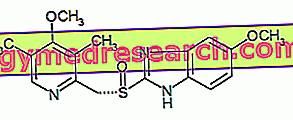Definition
Decompression syndrome occurs when rapid pressure reduction allows respiratory gases, previously dissolved in the blood or tissues, to form bubbles. This phenomenon is typically found in divers who ascend too quickly to the surface. However, decompression syndrome can also occur when the pressure suddenly decreases after hyperbaric chamber therapy or when an aviator quickly reaches very high altitudes.
Free gas bubbles can cause local symptoms or reach distant organs, thanks to blood flow. In some cases, they mechanically obstruct the blood vessels, giving rise to gas embolism. Other times, they break or compress the tissues, activating the cascades of coagulation and inflammation. Furthermore, considering that nitrogen dissolves easily in adipose tissue, structures with a high lipid content are particularly vulnerable (eg spinal cord, white substance of the central nervous system, myelin sheath of nerves, etc.).
The risk factors that predispose to the development of decompression syndrome include repeated or deep low-temperature dives.
Most common symptoms and signs *
- Anorexia
- Arrhythmia
- Asthenia
- Cyanosis
- Coma
- Seizures
- Language difficulties
- Dyspnoea
- Dysuria
- Chest pain
- Bone pain
- Articolar pains
- Muscle pains
- hemiparesis
- Tingling in the head
- Fecal incontinence
- Hearing loss
- Hypoaesthesia
- Swollen lymph nodes
- lipotimia
- Livedo Reticularis
- Backache
- Headache
- Nausea
- Urticaria
- Pallor
- Paresthesia
- Loss of coordination of movements
- Loss of balance
- pneumomediastinum
- presyncope
- itch
- Reduced vision
- Joint stiffness
- Confusional state
- Fainting
- tachypnoea
- Tetraplegia
- Cough
- Dizziness
- He retched
Further indications
The symptoms of decompression syndrome generally occur within 1-6 hours of emergence; they can rarely occur after a few minutes or a few days (24-48 hours). The nitrogen bubbles are located mainly in the joints and in the central nervous system, causing mild symptoms, such as pain during mobilization of the joints, or more serious, such as paralysis.
The symptoms of decompression syndrome typically include joint and muscle pain (especially on elbows, shoulders and back), headache, loss of appetite, exhaustion and malaise. Subsequently wheezing, chest pain, cough, cyanosis, alteration of the wrist, itching, bluish skin patches (cutis marmorata) and rash similar to urticaria may occur.
Neurological symptoms include tingling, paresthesia, dysuria, awkward speech, reduced hearing or vision, fecal or bladder incontinence, seizures and loss of consciousness. Gaseous embolization of the pulmonary vascular tree can cause heart failure and cardiogenic shock. Very serious cases can lead to coma and death.
Proper diving techniques are essential for the prevention of decompression syndrome;
by gradually ascending to the surface, thus allowing the nitrogen bubbles to gradually escape from the solution, divers can avoid the onset of symptoms. Dives made less than 24 hours apart (repeated) require special technical adjustments.
The treatment of decompression syndrome involves recompressive therapy in the hyperbaric chamber, so that the bubbles can return to the solution. Then, the pressure gradually decreased to the value of atmospheric pressure, allowing excess nitrogen to slowly exit the solution and be eliminated from the body by normal breathing.



